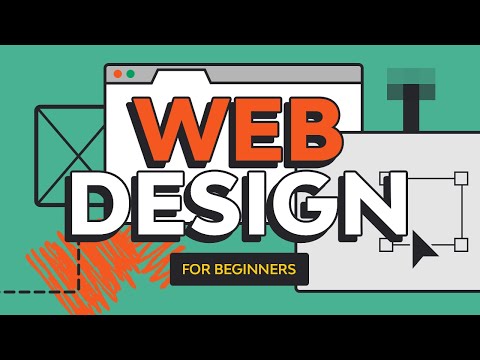A Comprehensive Overview to Crafting Aesthetically Appealing and Functionally Durable Website Design Solutions
In the ever-evolving landscape of website design, the balance in between aesthetic charm and practical stability stays paramount. A complete comprehension of fundamental layout concepts, together with a keen focus on user experience, can significantly improve the effectiveness of web services. By leveraging elements such as color theory and receptive formats, developers are geared up to produce not just aesthetically pleasing interfaces yet also ones that promote user engagement. The journey from concept to execution entails additional layers of complexity that advantage exploration, especially in the realms of testing and optimization. What approaches can be used to accomplish this delicate balance?
Recognizing Design Principles
Comprehending layout concepts is fundamental to producing reliable internet options that involve users and communicate messages clearly. These principles offer as the foundation for any type of successful layout project, directing the aesthetic and practical aspects of a website. Trick style principles include balance, comparison, positioning, rep, and closeness, each playing a critical duty in establishing a natural and visually pleasing format.
Contrast boosts readability and draws interest to vital features, enabling customers to navigate the web content effortlessly. Repetition reinforces a constant aesthetic language, enhancing brand identification and improving individual knowledge with the interface.
Significance of Individual Experience
Customer experience (UX) is vital in website design, as it straight influences just how visitors engage with a website and regard its worth. A well-designed web site not only brings in customers however also keeps them engaged, inevitably bring about higher conversion rates and client complete satisfaction. UX includes different elements, consisting of usability, availability, and the total aesthetic charm of the website.

Moreover, favorable individual experiences foster brand name commitment and urge repeat visits. In comparison, a bad UX can damage a brand's online reputation and discourage prospective customers. Consequently, purchasing UX layout is not simply an aesthetic consideration; it is a critical technique that can significantly affect a company's profits. Eventually, prioritizing individual experience in website design is essential for developing functional, interesting, and effective websites that meet the needs of modern individuals.
Color Theory in Website Design
Color theory plays a pivotal duty in internet layout, affecting not just the visual appeal of a site but additionally the psychological actions of its users. Comprehending shade dynamics is essential for producing an efficient individual experience. Shades can evoke details sensations; for instance, blue often shares trust fund and professionalism and trust, while red can infuse exhilaration or necessity.
When selecting a color combination, designers should take into consideration harmony and comparison. Corresponding shades can produce vibrancy, while analogous colors supply an even more tranquil feel. Using devices like color wheels can assist in recognizing efficient shade mixes. Accessibility has to be focused on; making certain enough comparison in between message and background shades is vital for readability.
Furthermore, social context plays a significant function in shade interpretation. While white symbolizes purity in Western cultures, it may stand for grieving in some Eastern societies. A comprehensive Related Site understanding of the audience is essential when applying color concept.
Including color psychology right into website design not just enhances aesthetic allure yet also affects customer habits, assisting them toward preferred activities. Inevitably, a well-balanced shade approach can significantly boost the general effect of a site.
Receptive and Flexible Designs
In enhancement to shade theory, the framework and design of a site significantly effect customer experience and involvement. web design. Receptive and adaptive designs are crucial methods for ensuring that sites work successfully throughout a multitude of tools and screen dimensions
Receptive layout uses fluid grids and adaptable images, permitting the format to readjust perfectly according to the viewport measurements. This approach makes certain a consistent customer experience, as material reflows and resizes, try this web-site maintaining access whether watched on a smart device, tablet, or desktop computer. Media queries play a crucial duty in responsive design by using various designs based on the gadget's attributes.

Both approaches aim to enhance individual experience by prioritizing usability and accessibility. Selecting between responsive and flexible layouts largely depends on task requirements, target audience, and wanted user communications, ultimately adding to the efficiency of web style solutions.
Testing and Optimization Methods
Examining and optimization techniques are crucial components of effective website design, ensuring that web sites not only satisfy individual assumptions however likewise execute effectively across different platforms. These methodologies encompass a series of techniques intended at assessing use, functionality, and general efficiency.
A/B screening is a foundational strategy, permitting developers to contrast 2 versions of a websites to figure out which carries out much better in regards to user interaction and conversion prices. User screening is similarly vital; it involves collecting comments from actual customers to identify pain factors and locations for improvement. This qualitative data can lead design modifications that boost user experience.
Additionally, efficiency optimization methods such as photo compression, code minification, and leveraging web browser caching can considerably improve straight from the source tons times and responsiveness. Tools like Google PageSpeed Insights and GTmetrix provide beneficial metrics for analyzing website performance, enabling developers to make data-driven decisions.
Verdict
In conclusion, the assimilation of essential design principles, user-centered approaches, and strenuous screening methods is important for developing reliable website design remedies. By focusing on equilibrium, comparison, placement, and color theory, designers can boost aesthetic appeal while making sure functionality. Responsive designs contribute to a seamless customer experience throughout tools, even more advertising involvement. Ultimately, the application of these strategies not just boosts customer complete satisfaction yet also drives conversion rates, strengthening the importance of an extensive layout structure.